

If you really respect Trump voters, tell them the truth. Why We Should Stop Grading Students on a Curve. How Schools Teach Traumatized Kids Who Struggle to Learn. Train Teachers Like Doctors. Photo AMERICA is facing a wave of teacher shortages that threatens our ability to deliver on the promise of quality education.
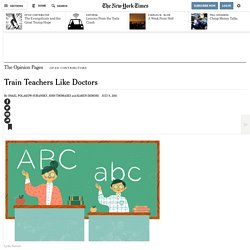
Baby boomer retirements and high rates of teacher turnover, coupled with steep drops in enrollment in teacher-preparation programs, have contributed to this growing crisis. How Do You Train People In Jobs That Yet To Exist? Every technological transitions replaces or eliminates existing jobs but also creates new ones; the challenge is transitioning those who are left behind because they’ve become experts at doing things that are no longer needed.
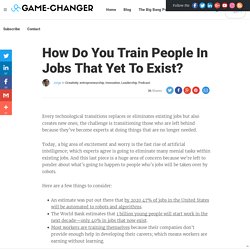
Today, a big area of excitement and worry is the fast rise of artificial intelligence; which experts agree is going to eliminate many menial tasks within existing jobs. And this last piece is a huge area of concern because we’re left to ponder about what’s going to happen to people who’s jobs will be taken over by robots. How to make a good teacher.
FORGET smart uniforms and small classes.
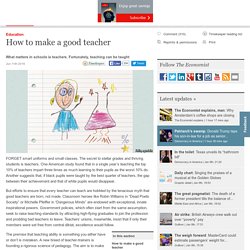
The secret to stellar grades and thriving students is teachers. Brooklyn Prospect is embarking on an ambitious experiment to eliminate segregation from education. Want Smart Kids? Make Sure They Learn to Do This. Family-Friendly Cities Start With Schools. American is becoming a majority-minority nation. It’s already happened in our public schools. If you want to know what America will look like in a generation, look at its classrooms right now.
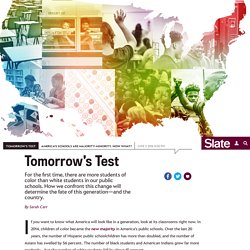
In 2014, children of color became the new majority in America’s public schools. Over the last 20 years, the number of Hispanic public schoolchildren has more than doubled, and the number of Asians has swelled by 56 percent. The number of black students and American Indians grew far more modestly—but the number of white students fell by about 15 percent. The majority-minority milestone has arrived in our public schools early—a consequence of white children’s overrepresentation in private schools and the relative youth of America’s black and Hispanic populations. The troubling shortage of Latino and black teachers — and what to do about it. (iStock) According to government estimates, students of color are now the majority in U.S. public schools.
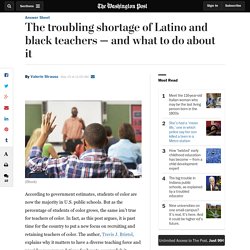
But as the percentage of students of color grows, the same isn’t true for teachers of color. In fact, as this post argues, it is past time for the country to put a new focus on recruiting and retaining teachers of color. The author, Travis J. Bristol, explains why it matters to have a diverse teaching force and provides recommendations for how to accomplish it.
Bristol is a former high school English teacher in New York City public schools and a teacher educator with the Boston Teacher Residency program. By Travis J. There is a troubling trend in education that is not getting enough attention: the growth of Latino teachers has not kept pace with the rising Latino student population — and the number of black teachers is shrinking. For example, from 2002-2012, 15 percent of black teachers left schools in New York City, while 62 percent did so in New Orleans. Can the best high school in the country thank its 9:15 a.m. start time for its success? Purestock/Thinkstock.
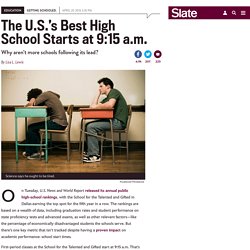
London Schools Prove Inner City Education Can Be Excellent. Opinion: Why Americans need to reinvent the entire education system. Senator Bernie Sanders is making waves with a big idea to reinvent education: Making public colleges and universities tuition-free.
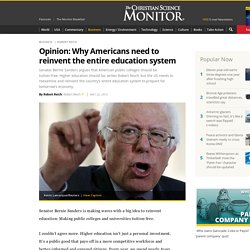
I couldn’t agree more. Higher education isn’t just a personal investment. It’s a public good that pays off in a more competitive workforce and better-informed and engaged citizens. In the beginning was the word. Are Universities Going the Way of Record Labels? - Martin Smith. If you spent the 1990s plucking songs from a stack of cassettes to make the perfect mixtape, you probably welcomed innovations of the next decade that served your favorite albums up as individual songs, often for free.
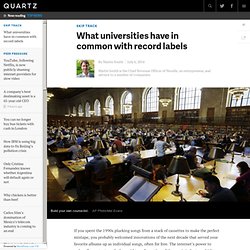
The internet’s power to unbundle content sparked a rapid transformation of the music industry, which today generates just over half of the $14 billion it did in 2000—and it’s doing the same thing to higher education. The unbundling of albums in favor of individual songs was one of the biggest causes of the music industry’s decline. It cannibalized the revenue of record labels as 99-cent songs gained popularity over $20 albums. High-School Dropouts and College Grads Are Moving to Very Different Places. The ability to attract skilled workers is a key factor, if not the key factor, in the growth of cities and metro regions.
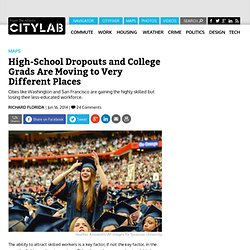
Cities themselves are understandably keen to tout when their populations are growing, but just tracking overall population can mask the underlying trends that will truly shape the future of our metro areas. A few weeks ago, I looked at the different places both recent immigrants and U.S. -born Americans are moving since the recession began. The Unfulfilled Promise of Educational Technology. Not only has technology entered nearly every area of our personal life, it's the rare industry that isn't computerized, networked, and advertised on Facebook.
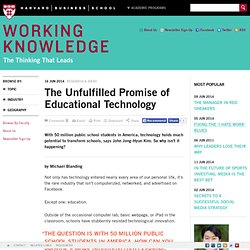
Except one: education. Outside of the occasional computer lab, basic webpage, or iPad in the classroom, schools have stubbornly resisted technological innovation. “The question is with 50 million public school students in America, how can you provide a more individualized learning experience?” Wanted: clear thinking on educating the work force. In a recent column, I criticized Canadian universities for turning away up to half of applicants for in-demand programs such as engineering, information technology and health care, while continuing to allocate much of their money to programs with poor job prospects. That drew some indignant responses from supporters of liberal arts programs. One respondent, a Latin teacher with arts degrees in Latin, ancient Greek language and Greek tragedy, said employers “do not all want people who are trained seals and regurgitators ... who populate our science programs today.”
Apparently the engineers responsible for designing the transportation systems, communication networks, medical imaging devices and other wonders of our technological age are simply “trained seals,” while medical researchers, physicians, technologists and those who learn specific skills are mere “regurgitators.” Canadian Council on Learning (CCL) Canadian universities must reform or perish. Canada has made a big bet on undergraduate education as the path to prosperity. Experiment giving undergrads more face time with profs a hit.